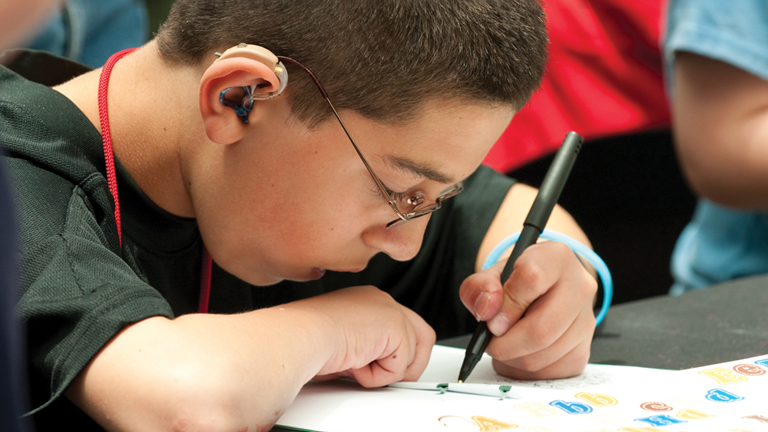Composer
Pyotr Ilyich Tchaikovsky

Genre
Performances for Young Audiences

National Ballet of China’s Chinese New Year. Photo by NBC.
Enjoy an insider’s look at our visiting companies as they prepare onstage for performance.
With its dazzling hybrid of western ballet and Chinese culture, National Ballet of China has won a distinguished reputation for performing cherished works and original creations. The renowned company returns to thrill audiences with its luminous fusion of traditions, telling the story of a family’s Chinese New Year celebration—set to Tchaikovsky’s treasured Nutcracker score. This colorful, fresh tale is brought to life by vibrant characters and radiant choreography. As a young Chinese girl celebrates the New Year, she embarks on a mystical journey through a world of festive Chinese customs. Audiences will delight as a scroll of Chinese folklore unfurls, showcasing the legendary monster Nian, the elegant and graceful Fans, the extravagant dances of Silk and Spinning Top, and more wonders in the ravishing Porcelain Kingdom.
January 29, 2025
Opera House, recommended for grades 6-12
Estimated duration is approximately two hours with an intermission.
Image caption: National Ballet of China’s Chinese New Year. Photo by NBC.
Composer
Pyotr Ilyich Tchaikovsky
We’re thrilled that you’ve joined us for a performance this season! We would like to hear from your students and you about the experience. After the performance, follow these steps to share feedback:
Each survey will take approximately five minutes to complete. The results will be used to inform future Kennedy Center Education program planning.ŌĆ»Thank you in advance for sharing your valuable perspective!
This resource offers a quick guide to what you may experience at a ballet rehearsal.
Learn the basics of Ballet, a type of performance dance that originated during the Italian Renaissance in the fifteenth century, developed into a concert dance form in France and Russia, and has since become a widespread and highly technical form of dance with its own vocabulary.
With their flat, stiff fronts and special construction, pointe shoes give ballerinas the footwear that helps them stay on their toes and wow audiences
In ballet, a pas de deux is a dance duet in which two dancers perform ballet steps together. But the pas de deux is not just a dance of love.
In this 3-5 lesson, students will choreograph a sequence of ballet movements to tell a story.┬ĀStudents will explore conceptual and practical elements of classical ballet and learn basic ballet vocabulary through demonstration.
In this 6-8 lesson, students will be introduced to basic ballet terms, positions, and movements. They will discover the history of ballet, the meaning of keywords, and practice French pronunciation. Students will demonstrate basic ballet positions and movements through planned choreography.
What does ballet have to do with the Russian Revolution? What's a pli├® or a jete or cinqui├©me? How do ballerinas condition their bodies to perform like athletes? Delve into an art form with a language all its own and a rich history interwoven with cultural revolution, political rebellion, and artistic innovation.
An army of buried warriors, lion dances, dancing shadows and a tornado of fire... experience the vibrant diversity of the arts across China.
Professional development for educators. Summer intensives for young artists. Teaching artist guided activities. Performances for young audiences. Classroom lesson plans. Arts-focused digital media.
Kennedy Center Education offers a wide array of resources and experiences that inspire, excite, and empower students and young artists, plus the tools and connections to help educators incorporate the arts into classrooms of all types.
Our current teaching and learning priorities include:
A robust collection of articles, videos, and podcasts that allow students of all ages to explore and learn about the arts online.

In-person and virtual performances, along with supporting educational content to help guide learning.

Current approaches to arts integration in the classroom, inclusion, rigor, and adopting an arts integration approach at the school and district level.

An asynchronous online course that invites educators and administrators to think about our students’ disabilities as social and cultural identities that enrich our classrooms and communities.

The Vice President of Education is generously endowed by the
Generous support for educational programs at the Kennedy Center is provided by the U.S. Department of Education.
Gifts and grants to educational programs at the Kennedy Center are provided by The Paul M. Angell Family Foundation; Bank of America; Capital One; The Morris and Gwendolyn Cafritz Foundation; Carnegie Corporation of New York; The Ednah Root Foundation; Harman Family Foundation; William R. Kenan, Jr. Charitable Trust; the Kimsey Endowment; The Kiplinger Foundation; Laird Norton Family Foundation; Lois and Richard England Family Foundation; Dr. Gary Mather and Ms. Christina Co Mather; The Markow Totevy Foundation; Dr. Gerald and Paula McNichols Foundation; The Morningstar Foundation; Myra and Leura Younker Endowment Fund; The Irene Pollin Audience Development and Community Engagement Initiatives;
Prince Charitable Trusts; Dr. Deborah Rose and Dr. Jan A. J. Stolwijk; Rosemary Kennedy Education Fund; The Embassy of the United Arab Emirates; The Victory Foundation; The Volgenau Foundation; Volkswagen Group of America; Jackie Washington; GRoW @ Annenberg and Gregory Annenberg Weingarten and Family; Wells Fargo; and generous contributors to the Abe Fortas Memorial Fund and by a major gift to the fund from the late Carolyn E. Agger, widow of Abe Fortas. Additional support is provided by the National Committee for the Performing Arts..
The content of these programs may have been developed under a grant from the U.S. Department of Education but does not necessarily represent the policy of the U.S. Department of Education. You should not assume endorsement by the federal government.